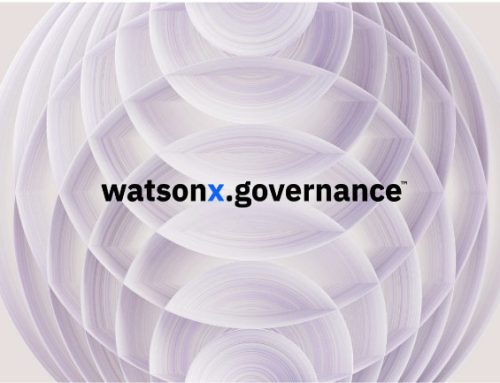
Balancing Data Governance and AI Accessibility in Watsonx.data
Organizations all over the world are rushing to unlock the power of Artificial Intelligence (AI) in order to gain a competitive edge. IBM’s Watsonx.data offers a compelling platform for this, combining the strengths of data warehousing and data lakes.
However, to fully leverage Watsonx.data, it’s crucial to strike a balance between robust data governance and seamless AI accessibility. This article explores the key considerations and strategies for achieving this equilibrium.
The Two Priorities: Governance and Accessibility
Data governance ensures data quality, security, and compliance. It establishes policies and procedures for managing data assets, mitigating risks, and ensuring data is used ethically and responsibly.
AI accessibility, on the other hand, focuses on making data readily available and usable for AI models and applications. This involves streamlining data access, simplifying data preparation, and providing tools that empower data scientists and AI developers.
In Watsonx.data, these two imperatives are not mutually exclusive. Effective data governance is, in fact, a prerequisite for successful AI adoption.
Without it, organizations risk using biased, inaccurate, or non-compliant data, leading to flawed AI models and potentially harmful outcomes. Conversely, overly restrictive governance can stifle innovation by making it difficult for AI practitioners to access the data they need.
Top 6 Strategies for Balancing Governance and Accessibility in Watsonx.data
1. Implement a unified metadata layer
Watsonx.data’s shared metadata layer provides a single point of entry for accessing and understanding data assets. This simplifies data discovery for AI users while ensuring that governance policies are consistently applied across all data sources.
Imagine a central catalog where every dataset, its schema, and its associated governance rules are clearly documented. This allows data scientists to quickly find relevant data with the assurance that it adheres to organizational policies.
2. Leverage data virtualization
Watsonx.data’s data virtualization capabilities allow AI users to access data from various sources without physically moving it. This reduces data duplication and simplifies data management, while governance policies remain in force.
Instead of creating multiple copies of a large customer database for different AI projects, data virtualization allows secure, on-demand access to the original source. This eliminates data silos and ensures consistent application of governance without hindering AI development workflows.
3. Employ granular access controls
Watsonx.data offers fine-grained access controls, allowing organizations to define permissions based on user roles, data classifications, and security policies. This ensures that sensitive data is protected while authorized AI users have the access they need.
For instance, a marketing analytics team might be granted access to anonymized customer demographics for model training, while sensitive PII remains restricted to authorized personnel through role-based access and data masking policies within Watsonx.data. This precise control balances data security with the necessary access for AI innovation.
4. Automate data quality checks
Watsonx.data provides built-in data quality rules and profiling tools. Automating data quality checks helps ensure that AI models are trained on accurate and consistent data, while reducing the burden on data scientists.
Setting up automated rules within Watsonx.data to flag records with missing values or inconsistent formats ensures that AI models are trained on reliable data. This proactive approach reduces the risk of inaccurate model outputs and minimizes the manual effort required for data cleaning.
5. Establish data lineage tracking
Watsonx.data’s data lineage tracking capabilities provide a clear audit trail of data transformations and usage. This is essential for ensuring data compliance and building trust in AI models.
If an AI model produces an unexpected outcome, data lineage tracking in Watsonx.data allows tracing back the data’s journey from its source through all transformations. This transparency is crucial for debugging issues, ensuring compliance, and building confidence in the AI lifecycle.
6. Use AI-powered data discovery
Watsonx.data’s AI-powered conversational interface (in tech preview) allows users to find, augment, and visualize data using natural language. This makes data more accessible to a wider range of users, including those without deep technical skills.
A data analyst can ask Watsonx.data, “Show me sales data for the last quarter in the central region,” and the AI will intelligently identify and present the relevant datasets. This natural language interaction democratizes data access, enabling more users to contribute to AI initiatives without requiring deep SQL knowledge.
How ASB Resources Can Help You Balance Governance and Accessibility
Achieving a balance between data governance and AI accessibility in Watsonx.data requires expertise in both data management and AI. ASB Resources can help your organization navigate this complex landscape by:
- Developing a comprehensive data governance strategy tailored to your specific needs.
- Implementing and configuring Watsonx.data’s governance and security features.
- Designing and implementing data pipelines that ensure data quality and accessibility for AI.
- Providing training and support to empower your team to effectively use Watsonx.data for AI.
Is your organization ready to unlock the full potential of AI with Watsonx.data while maintaining robust data governance?
Let the experts at ASB Resources design and implement a comprehensive strategy to balance data governance and AI accessibility in your Watsonx.data environment. Schedule a call with one of our experts today!








